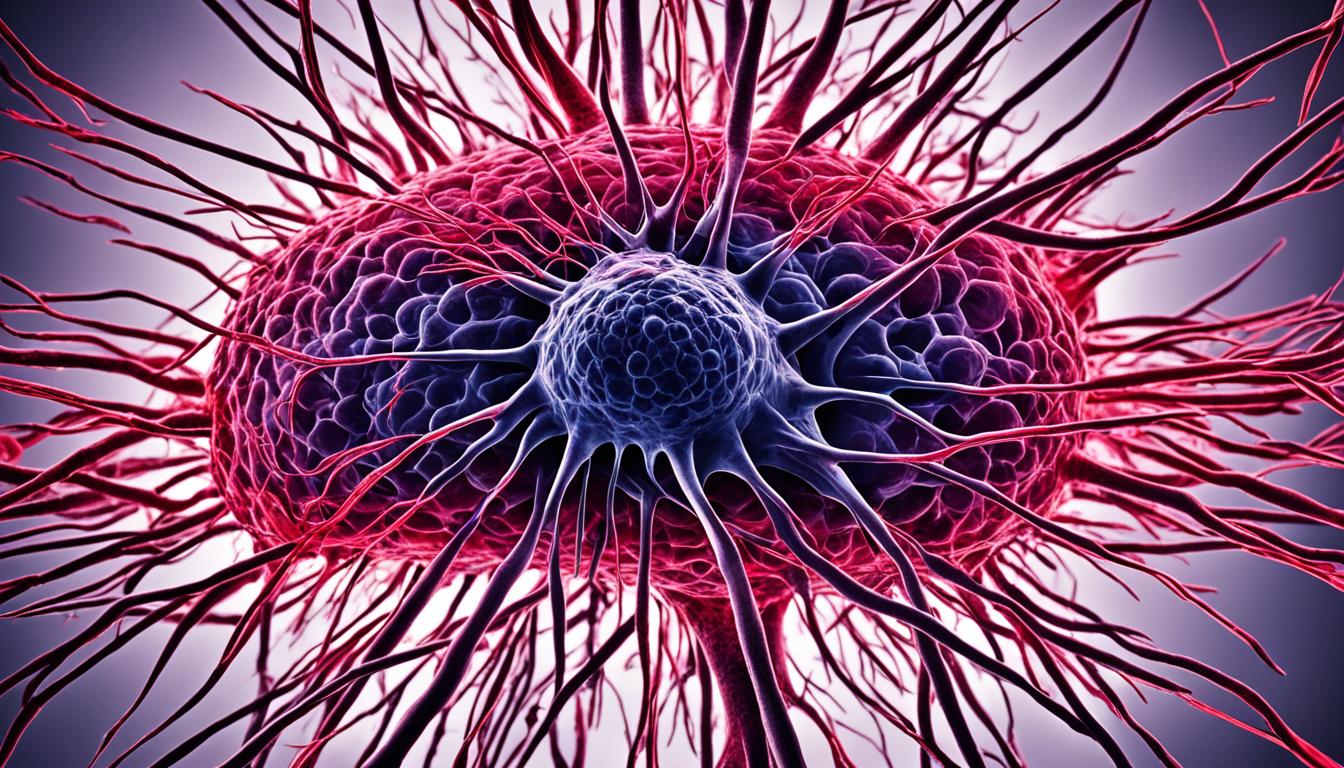Inflammatory breast cancer (IBC) is very serious and sadly, can be deadly for women. It shows up fast with symptoms like a red rash, swelling, and the skin looking like an orange peel over part of the breast.
IBC is not like other breast cancers. It often takes a while to find out you have it, and tests might not show a lump. But, doctors can usually see the skin getting thicker. They need to do a biopsy to confirm and find that the cancer has invaded the lymph nodes in about 60% of cases.
The chances of getting IBC and how well you might do afterwards can be different based on your background. For example, some groups have more of certain types of IBC. The average survival for someone with IBC for 5 years is about 55%. But treatments like chemo before surgery, a breast removal, and radiation in the area can help a lot.
Scientists are studying different treatments for IBC. They want to see if certain medicines work better for different types of this cancer. They are also looking at if stem cell therapy could be a good way to treat IBC.
Key Takeaways:
- Inflammatory breast cancer (IBC) is a fast-growing form that can be deadly.
- Common symptoms include erythema, edema, and skin thickening over at least one-third of the breast.
- It’s often hard to find IBC early because tests may not see a lump. But, they could show the skin getting thicker.
- How likely you are to get IBC and how you might do if you get it can change based on your background.
- Neoadjuvant chemotherapy, modified radical mastectomy, and local regional radiation treatment have boosted outcomes in IBC.
To learn more about symptoms, causes, diagnosis, and how to deal with inflammatory breast cancer, stay in the know. Join a support group or talk to doctors and nurses. They can give you more details and help.
Epidemiology and Clinical Features of Inflammatory Breast Cancer
Inflammatory breast cancer (IBC) is rare but very aggressive. It shows up with quick, noticeable symptoms. These include a warm, thickened skin, looking like an orange peel, and changes in the nipple such as flattening or crusting.
The symptoms don’t last more than six months. The area affected must be at least a third of the breast. A biopsy is needed to confirm invasive carcinoma.
To see how much the cancer has spread, doctors recommend lab tests and imaging. This can involve CT scans and bone scans. These tests help plan the best treatment.
There are a few other conditions this disease can look like. Doctors need to rule these out. They include non-inflammatory breast cancer and infections of the breast.
The usual treatment for IBC without spread involves several steps. There’s chemo before surgery to shrink the tumor. Then, the affected breast is removed. Afterward, radiation helps kill any remaining cancer cells.
Clinical Features of Inflammatory Breast Cancer
Understanding what makes inflammatory breast cancer (IBC) special is crucial. It stands out because of its quick symptoms and unique appearance.
IBC shows signs like warm, thickened skin and the orange peel look on the breast. The nipple may change, showing symptoms like erythema or crusts.
The symptoms often appear fast, not lasting more than six months. A biopsy is crucial to officially diagnose IBC.
Laboratory tests and imaging, like CT scans, are part of the diagnosis. They help know how far the cancer has spread. This knowledge is key to planning the right care.
Differential Diagnoses
Getting an IBC diagnosis means ruling out other similar issues. Differential diagnoses help pinpoint the disease by excluding others. They may include:
- Non-inflammatory breast cancer
- Infectious mastitis and breast abscess
- Ductal ectasia
- Other malignancies
Thorough tests, such as biopsies, are vital. They ensure the right diagnosis and treatment. This is crucial for the best patient care.
Treatment Approach
For IBC that hasn’t spread, a mix of treatments works best. This usually includes:
- Chemo first: it’s given to shrink the tumor before surgery.
- Removal of the breast: a mastectomy is often needed.
- Radiation after: it’s done to kill any remaining cancer cells.
Combining these treatments offers the best chance against inflammatory breast cancer. It aims to improve how well patients do.
Treatment and Prognosis of Inflammatory Breast Cancer
Inflammatory breast cancer (IBC) is treated with different therapies. It starts with neoadjuvant chemotherapy. Then, surgery and radiation therapy follow. Chemotherapy mixes with anthracycline and taxane are commonly used. If the cancer is HER2+, doctors recommend targeting it with trastuzumab and pertuzumab. For cancers that react to hormones, endocrine therapy is used after chemotherapy.
Mastectomy is the usual surgery choice due to better survival rates. But, using high-dose chemotherapy with stem cell transplant doesn’t better the chance of living for IBC patients. The outlook for IBC is generally not as good, with around a 55% survival rate after five years.
Scientists are looking into the causes of IBC and new ways to treat it. One idea is stem cell therapy, which looks promising. Studies continue to check if and how stem cell therapy can help IBC patients.

